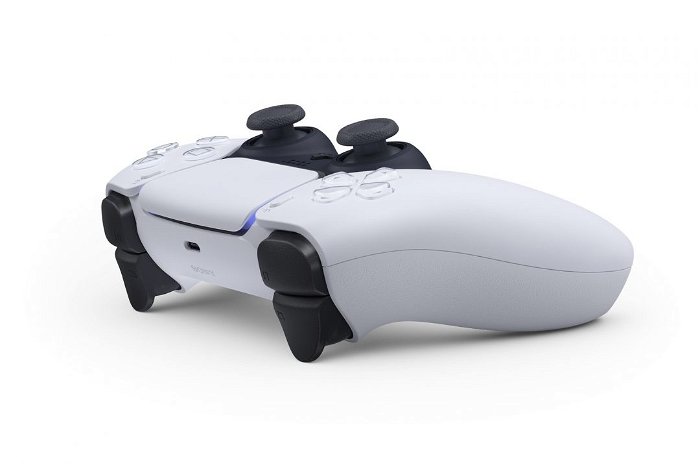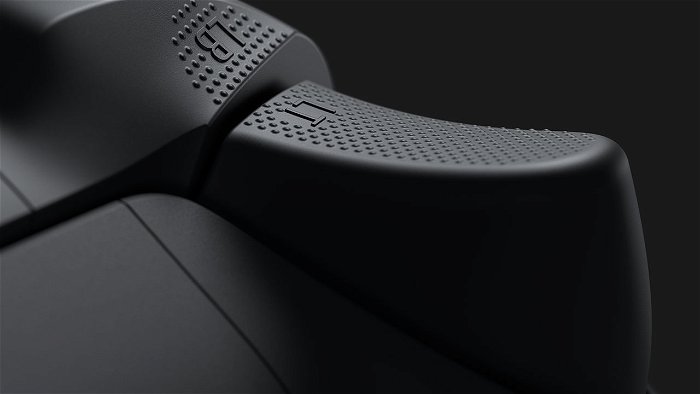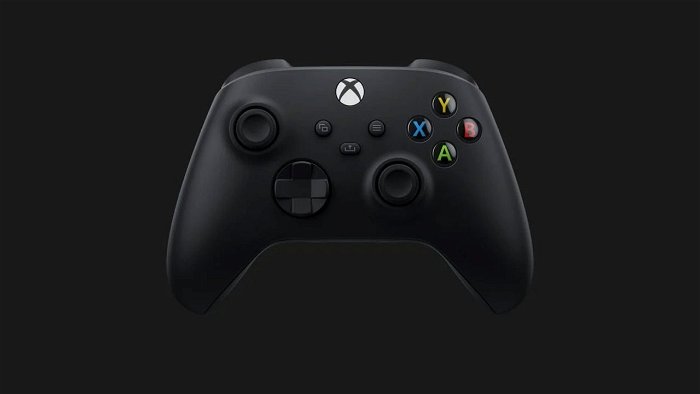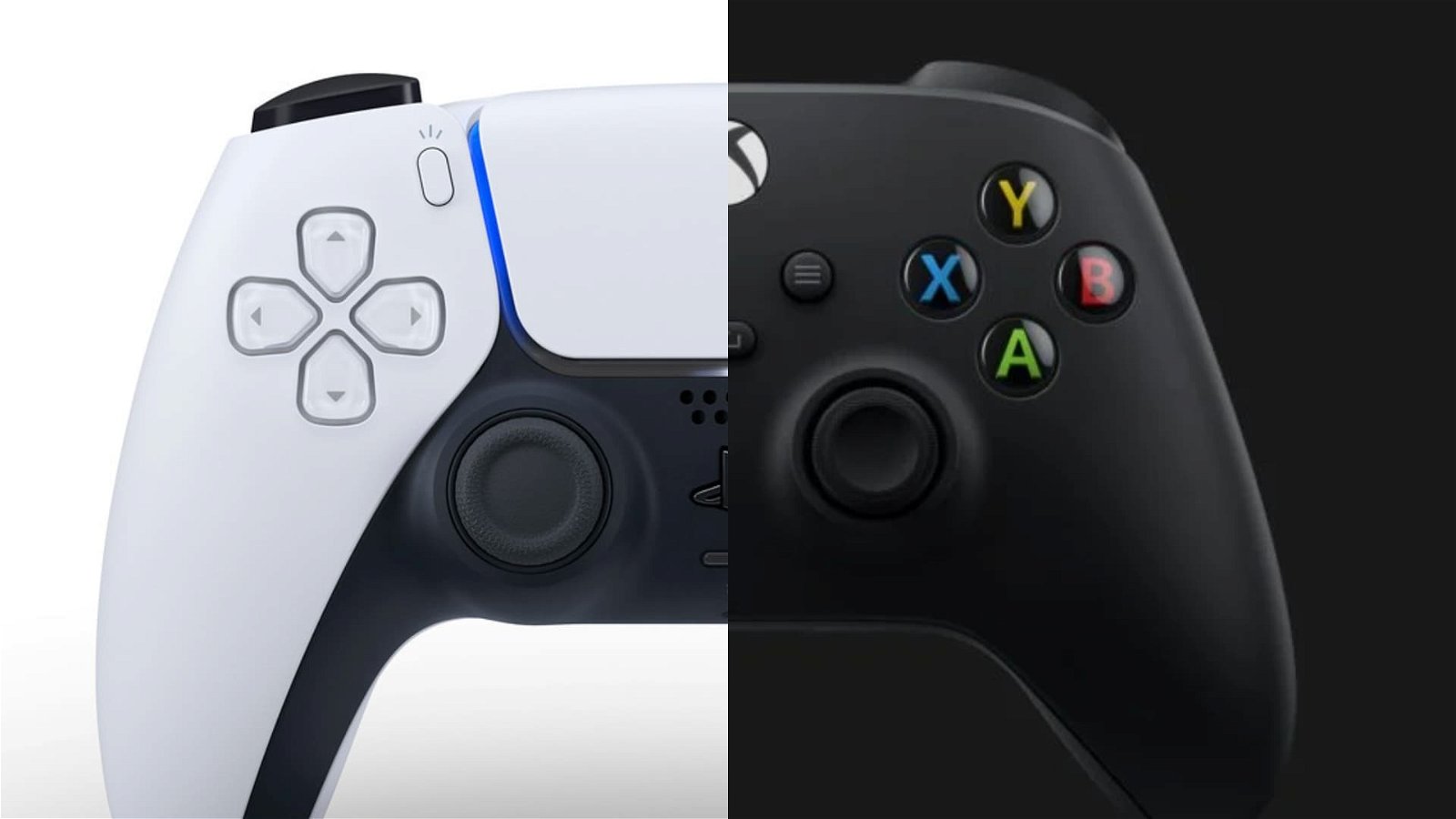Over the last week, both Microsoft and Sony unveiled controller designs for their next generation of home consoles. From these new controller designs, there is a lot we can deduce about each company’s plans for their hardware launches later this year. The Xbox Series X Controller’s new share button, new Dynamic Latency tech, and wide compatibility show an initiative to improve and evolve systems Microsoft already has in place. Meanwhile, the PlayStation 5 controller, the DualSense, and its haptic feedback and adaptive triggers point to Sony’s focus on innovation.
Each of these features opens up the imagination of what will be possible for future games. But more importantly, they each indicate what each company has learned from the last console cycle, and what their focus will be with this coming generation.
Cross-Compatibility
Since taking the reins in 2014, the head of Xbox Phil Spencer’s vision for the platform has been clear: open Xbox to all gamers and all possibilities. And compatibility has been a central theme of that message ever since. Though Xbox One first launched without backwards compatibility, it eventually was updated to play an expanding library of both Xbox 360 and original Xbox games. This was followed by the launch of Xbox Game Pass, a digital service that lets customers play a library of games on both PC and Xbox One for a single monthly charge. Microsoft’s messaging for Xbox has shown an accelerated trajectory away from single-device marketing and towards open-platform, digital branding.

The Xbox Series X Controller marks a large step in this direction. With the unveiling, Microsoft confirmed that the controller would be cross-compatible with the Xbox One, PC, Android, iOS and other platforms. It also confirmed that the Xbox One Controller currently on the market will be forwards-compatible with the Xbox Series X. Microsoft’s goal for the next generation of gaming is clear here: no matter where you’re playing, what you’re playing on, or what you have, you can play Xbox.
Sony’s messaging on cross-compatibility, on the other hand, has been less clear. There is no word from Sony as to whether or not the DualShock 4 will work with PS5, leading most to believe it won’t. While the PS4 controller was eventually given support on iOS devices and PC game hubs like Steam, the DualSense announcement gave no such details. By how the blog post reads, it might be safe to assume the DualSense will be exclusively a PS5 controller out of the box.

Even when Sony does have cross-compatibility features to announce, the execution is anything but celebratory. Following a truly bizarre livestream event from Mark Cerny discussing the PS5’s hardware capabilities, Senior VP of Platform Management Nishino gave an update on the original post, stating that Sony “believe[s] that the overwhelming majority of the 4,000+ PS4 titles will be playable on PS5,” and that they are reviewing games on a case-by-case basis in that regard.
It is possible that the Xbox Series X will require similar vetting. But there is a stark difference in messaging between fully brandished “play anywhere” marketing, and a quiet reply-all update below a post of a live-streamed video with Mark Cerny discussing how the PS5 will work with the biological structure of the human ear (seriously, go watch the video). This lack of flare shows that, while Microsoft heralds itself as the champion of cross-compatibility, Sony’s sights are set elsewhere.
Triggers and Innovation
While many of us recall a time of the large A or Cross circles dominating the real estate of our thumb-thwapping memories, we all know the truth: the triggers are the most important buttons on the modern gamepad. Besides the thumbsticks, they are the most dynamic inputs. They most resemble many of the mechanisms they are meant to emulate (i.e. firearms or pedals). And they free up our thumbs for the analog sticks, the most essential tools for virtual 3D traversal. If I associate any memory of an incredible moment in a video game with a singular press of a button, ’twas the trigger I pulled.

At this point in the game, both Sony and Microsoft’s designers seem to understand the importance of the triggers. The DualShock 4 rectified the failure that was the DualShock 3’s slip-off triggers, and the Xbox One Controller improved on its predecessor with trigger rumble and magnetic, springless resistance. Both designs were excellent and could easily be carried over the next generation.
The DualSense, however, is an interesting attempt by Sony to innovate. Along with the addition of trigger rumble (which, again, Xbox One has had since its 2013 launch) and haptic feedback, the new PS5 controller will have adaptive triggers, which ostensibly will function to give the player resistance against their trigger pulls.
This hardware capability set my imagination on fire when I first heard it. It’s unclear how capable these trigger actuators would be, but it’s easy to imagine some implementations. The initial resistance of a firearm’s trigger, followed by a sudden give. The force of an enemy pushing against your avatar in a scuffle. The satisfying softness of cutting scissor through construction paper. Or, as Sony offered in the announcement, the tension of a drawn bow with a loaded arrow. Who knows what ideas developers might come up with for more realistic—or even abstracted—feedback?

All this said, it depends on the developers to make use of this hardware. Sony has a long lineage of experimental features on their controllers—the DualShock 4’s touchpad, the PS Vita’s back touchpad, and the PS Move to name a few. First-party developers are often the first to make use of these innovations, to varying levels of success. (Success: Vita and Tearaway. Failure: Wonderbook and anything for Wonderbook.) Third-party devs, however, will have an additional gamepad to work with.
Though compatible with anything sporting a high-res piece of glass on it, the Xbox Series X Controller does not bolster much in way of innovation. The new share button and redesigned D-pad are welcome additions, but one is an adaptation from both Sony and Nintendo, and the other is a reiteration (of a component which Xbox controller designers have struggled with since the first console). It could be argued that Microsoft’s initiative for cross-compatibility leaves little room for innovation. One could also say, however, that the current design needs no further additions.
Keeping What Worked
With both announcements, there was an acknowledgement of what worked from the previous controller designs. “We think we have a good controller in the market today,” Head of Xbox Phil Spencer said to GameSpot. “So we didn’t really feel like we needed to go back to square one to build [a new controller].” Similarly, in Sony’s announcement post, Senior VP of Platform Planning Hideaki Nishino said that the design of the new DualSense “keep[s] much of what gamers love about the DualShock 4 intact.”
All of this is true. While both pads had their own minor quirks, the Xbox One Controller and DualShock 4 were both received as the pinnacles of gamepad history. The DualShock 4 improved on grippage from the smaller, oddly angled controller for the PlayStation 3, and the Xbox One Controller was a welcomed slimmer redesign of the widely admired Xbox 360 gamepad, complete with a functional directional pad. Both designs were already in a great place.

Based on this week’s announcements, both new controllers are keeping much of what was established back in 2013. The button-stick layout remains unchanged, as does the general form factor. This would certainly be the least extreme generational redesign in either company’s history.
There are some changes to the ergonomics of both redesigns. Sony said that, from the DualShock 4 to the Dualsense, they “changed the angle of the hand triggers” and made changes to the grip in order to “[make] the controller feel smaller than it really looks.” Similarly, Microsoft’s Ryan Whitaker said that they’d “improved ergonomics for a wider range of people,” no doubt in response to some consumers’ complaints about the Xbox One Controller being a bit too large for some hands. Both have cited hundreds of hours of prototyping and testing to get these ergonomics right. Funny that this message always comes up at the start of a new generation of handheld gear, but hey, nothing wrong with a little retweaking every seven years or so.

Ergonomic nudging aside, it is incredible how unchanged these controllers are compared to even the DualShock 3 and Xbox 360 Controller. The face buttons, triggers and bumpers, dual analog sticks, and handles have become an apparently irrevocable design. It begs to question what changes we can expect in the next console cycle. While standardized SSD storage and an uptick in framerates and resolution are exciting upgrades, there is little in the way of input that is changing this generation…unless, of course, we do away with both the Xbox Series X Controller and the DualSense to make way for extreme redesigns like VR headsets and motion controls.



